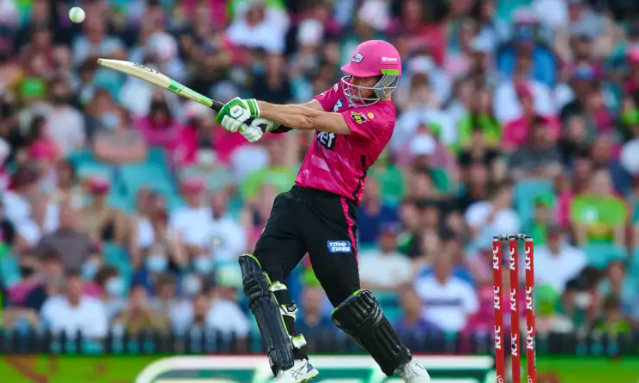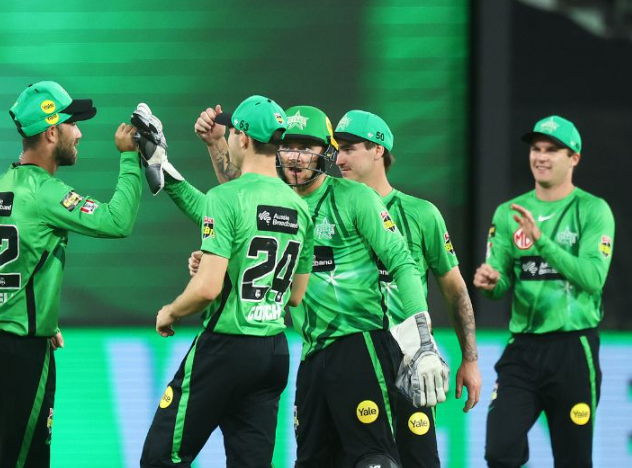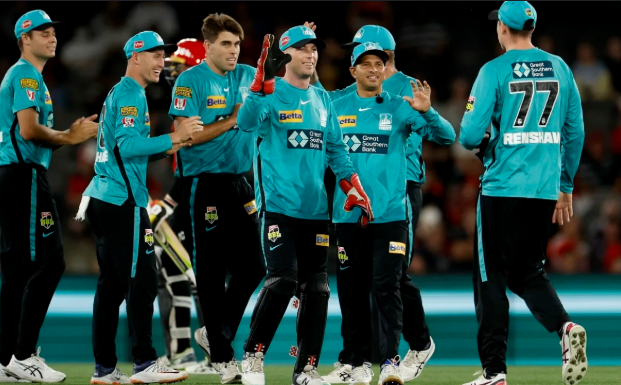Score: The Big Bash League (BBL) has become one of the premier T20 leagues in the world, showcasing exciting cricket, memorable performances, and high-scoring encounters. From explosive batting displays to stunning bowling performances, the league has produced numerous thrilling matches. However, not every game in the competition has been filled with fireworks. In fact, some matches have been marked by remarkably low scores, especially when the batting collapses in dramatic fashion.
Among these, there is one match in particular that stands out as having the lowest score in Big Bash League history. This article will take a deep dive into the match, discuss the circumstances around the low score, and explore the factors that led to such an outcome.
The Lowest Score in BBL History

The lowest score in Big Bash League history was set in the 2015-16 BBL season, during a match between the Melbourne Renegades and the Sydney Thunder. This encounter remains one of the most talked-about games in BBL history due to the sheer dramatic nature of the game and the incredible collapse that led to the Renegades’ dismal performance.
The Match: Melbourne Renegades vs. Sydney Thunder (2015-16)
The match took place on January 14, 2016, at the Melbourne Cricket Ground (MCG), one of the biggest stadiums in the world. Both teams were part of the BBL’s original lineup, and the game was expected to be competitive given the quality of players in both teams.
However, what transpired on that day would shock everyone. The Melbourne Renegades, known for having strong batting line-ups, found themselves bowled out for a mere 57 runs, which is still the lowest score ever recorded in the BBL.
Match Breakdown: Melbourne Renegades’ Batting Collapse
| Team | Innings | Runs | Wickets | Overs Faced | Highest Score |
|---|---|---|---|---|---|
| Melbourne Renegades | 1st innings | 57 | 10 | 15.5 | Marcus Harris – 14 |
| Sydney Thunder | 2nd innings | 58 | 3 | 13.4 | Shane Watson – 34 |
The Renegades’ Batting Performance

The Renegades’ batting performance was nothing short of a disaster. After winning the toss, they chose to bat first, but from the very beginning, they were put under immense pressure by the Sydney Thunder bowlers.
Early Wickets: The Renegades lost their opening wickets quickly, with their top order failing to handle the swinging conditions. Star players like Aaron Finch, Matthew Wade, and Ben Dunk were dismissed cheaply, and the middle order failed to recover.
Bowlers in Control: The Thunder’s bowling attack, led by Shane Watson and Andrew Tye, dominated the match. They used the conditions to their advantage, making full use of the MCG’s pitch, which had some movement early on. The Thunder bowlers maintained a tight line and length, reducing the Renegades’ batting line-up to rubble.
Key Contributions: The highest score for the Renegades came from Marcus Harris, who managed just 14 runs. Apart from him, no other batsman reached double figures, and the Renegades were bowled out for 57 runs in just 15.5 overs.
Sydney Thunder’s Quick Chase
In response to the Renegades’ paltry total of 57, the Sydney Thunder needed just 58 runs to win. While the chase seemed straightforward, the Thunder also faced a few hiccups on the way, losing three wickets during the chase.
Shane Watson’s Impact: The experienced all-rounder Shane Watson top-scored for the Thunder, contributing 34 runs from 23 balls. Watson’s steady batting anchored the chase and helped the Thunder get closer to the target.
Thunder’s Chase: Despite losing three wickets, the Thunder crossed the finish line with ease, reaching 58/3 in just 13.4 overs. This quick chase completed one of the most unexpected games in BBL history.
Factors Leading To The Lowest Score

Several factors contributed to the Melbourne Renegades’ shocking collapse, and it’s worth analyzing them in detail to understand why such a low score was registered.
1. Brilliant Bowling by Sydney Thunder
The Sydney Thunder bowlers were in impeccable form during this match. Shane Watson and Andrew Tye spearheaded the attack, with the former taking 3 wickets for 14 runs and the latter claiming 3 wickets for 16 runs. Their ability to extract movement from the pitch, especially during the early stages of the innings, created immense pressure on the Renegades’ batsmen.
Shane Watson was particularly brilliant, bowling with precision and discipline. His experience in both domestic and international cricket allowed him to outthink the Renegades’ batsmen.
Andrew Tye used his variations effectively, including his deadly yorkers and slower balls, to cause confusion in the Renegades’ batting order.
2. Poor Batting by the Renegades
On the flip side, the Melbourne Renegades’ batting simply fell apart. While the Thunder bowlers were excellent, the Renegades’ batsmen also failed to adapt to the conditions. The pitch had some bounce and swing, which troubled the Renegades throughout their innings.
Inability to Build Partnerships: The Renegades had no significant partnerships, with wickets falling at regular intervals. The collapse was swift, and none of the batsmen managed to stabilize the innings or build any resistance against the Thunder bowlers.
Pressure of Big Games: The Renegades’ batting line-up, which included some big names, was unable to handle the pressure of a high-stakes match. Big players like Aaron Finch, Matthew Wade, and Ben Dunk could not adapt to the challenging conditions, leading to their untimely dismissals.
3. Tactical Mistakes and Mental Errors
It is also fair to say that there were some tactical errors and mental mistakes that contributed to the Renegades’ downfall:
- The choice of batting first on what seemed like a difficult pitch could be questioned, especially given the Thunder’s superior bowling attack. A more cautious approach could have paid off better.
- The pressure of a big stage may have led to some mental lapses, as several batsmen were dismissed playing rash shots that were completely avoidable.
Impact Of The Match: A Defining Moment In BBL History

This match remains one of the most talked-about games in the history of the Big Bash League. It showcased how a combination of exceptional bowling and poor batting could result in a shocking low score. While the Thunder’s victory was clinical, the Renegades’ collapse was a cautionary tale about how fragile a batting line-up can be in T20 cricket.
1. Psychological Impact
For the Renegades, this defeat had a psychological impact. Despite the low score, they went on to bounce back in future seasons, but the 2015-16 season remains a painful memory. On the other hand, for the Sydney Thunder, this match highlighted their potential as a serious team in the competition, and they went on to enjoy further success in the coming years.
2. A Reminder of T20’s Unpredictability
The game serves as a reminder of how unpredictable T20 cricket can be. In a format where high scores are often the norm, seeing a team bowled out for such a low total is a rare but humbling experience for players and fans alike. This match, however, also adds to the unpredictability and excitement of the Big Bash League.
A Historic Collapse In The Big Bash League

The Melbourne Renegades’ score of 57 against the Sydney Thunder in the 2015-16 season remains the lowest score in Big Bash League history. The match serves as a reminder of the fine margins that exist in T20 cricket, where a team can go from high expectations to complete collapse in the blink of an eye. While the Renegades’ collapse was shocking, it also demonstrated the brilliance of the Thunder’s bowlers, who exploited the conditions perfectly. This match is one of the most memorable and historic encounters in the BBL’s rich history, and it continues to be referenced whenever the topic of low scores in T20 cricket arises.

